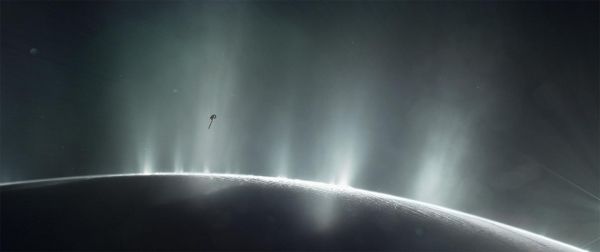Several years ago, planetary scientist Lynnae Quick began to wonder whether any of the more than 4,000 known exoplanets, or planets beyond our solar system, might resemble some of the watery moons around Jupiter and Saturn. Though some of these moons don’t have atmospheres and are covered in ice, they are still among the top targets in NASA’s search for life beyond Earth. Saturn’s moon Enceladus and Jupiter’s moon Europa, which scientists classify as “ocean worlds,” are good examples.
“Plumes of water erupt from Europa and Enceladus, so we can tell that these bodies have subsurface oceans beneath their ice shells, and they have energy that drives the plumes, which are two requirements for life as we know it,” says Quick, a NASA planetary scientist who specializes in volcanism and ocean worlds. “So if we’re thinking about these places as being possibly habitable, maybe bigger versions of them in other planetary systems are habitable too.”
Quick, of NASA’s Goddard Space Flight Center in Greenbelt, Maryland, decided to explore whether — hypothetically — there are planets similar to Europa and Enceladus in the Milky Way galaxy. And, could they, too, be geologically active enough to shoot plumes through their surfaces that could one day be detected by telescopes.
Through a mathematical analysis of several dozen exoplanets, including planets in the nearby TRAPPIST-1 system, Quick and her colleagues learned something significant: More than a quarter of the exoplanets they studied could be ocean worlds, with a majority possibly harboring oceans beneath layers of surface ice, similar to Europa and Enceladus. Additionally, many of these planets could be releasing more energy than Europa and Enceladus.
Read more at NASA/Goddard Space Flight Center
Image: This illustration shows NASA's Cassini spacecraft flying through plumes on Enceladus in October 2015. (Credit: NASA/JPL-Caltech)


